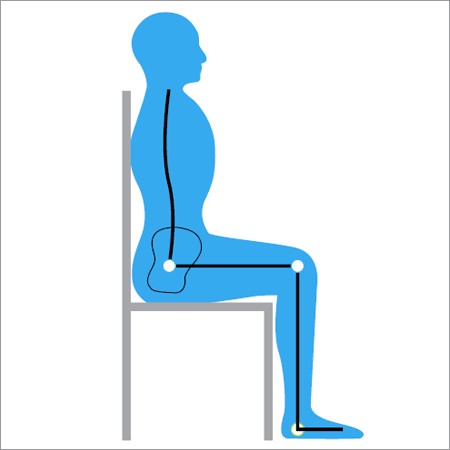Having excellent posture is essential for health and function. Continue reading to find out how to get (and maintain) great posture.
Most activities of daily living involve both sitting and standing. However, the manner in which we sit or stand can significantly impact how well the body is able to move and function. If given the choice between sitting and standing, the answer should ALWAYS be standing. Despite the fact that the overwhelming majority of people sit for work, school, etc., sitting is one of the most detrimental activities to the human body. Let’s also be realistic, though. Many don’t have the choice but to sit. With this is mind, let’s examine the features of excellent seated posture. Most of these features also apply to standing posture as well.
1) Head directly over the shoulders – if the head is shifted forward, it places extra strain on the muscles of the upper back and neck
2) Shoulders in a neutral position – shoulders which are rolled forward often go together with a forward-shifted head.
3) Feet flat on the floor – having your legs crossed encourages muscle imbalance and can affect the alignment of the lower back and pelvis.
Perfected seated posture looks something like this:

Although it looks rigid and uncomfortable, it is the posture for which our muscles were designed to maintain. The postures that involve hunching forward or leaning off to one side are in fact the ones that lead to discomfort and loss of function over time.
So how do we help people improve their posture? A combination of chiropractic care, corrective exercise, and ergonomic training is what ultimately achieves the best results. Chiropractic care corrects any misalignments in the spine that affect the nervous system, which is in direct control of muscle tension. Corrective exercise restores muscle balance by strengthening weak muscles and stretching tight muscles. An example would be strengthening the upper back muscles and stretching the chest muscles. This would allow the shoulders to maintain a neutral position. Finally, we help people tie these postural principles into their work or school desk/set up. How to position the computer monitor, what kind of chair to use, and how to position the keyboard and mouse are common topics that are discussed when it comes to finding solutions for making these setting more ergonomic.
If you are experiencing aches and pains while you work, give the Springfield Wellness Center a call at 217-726-0422 to see how we may be able to help you!
-Dr. Pat
Source: http://www.health.harvard.edu/staying-healthy/why-good-posture-matters
